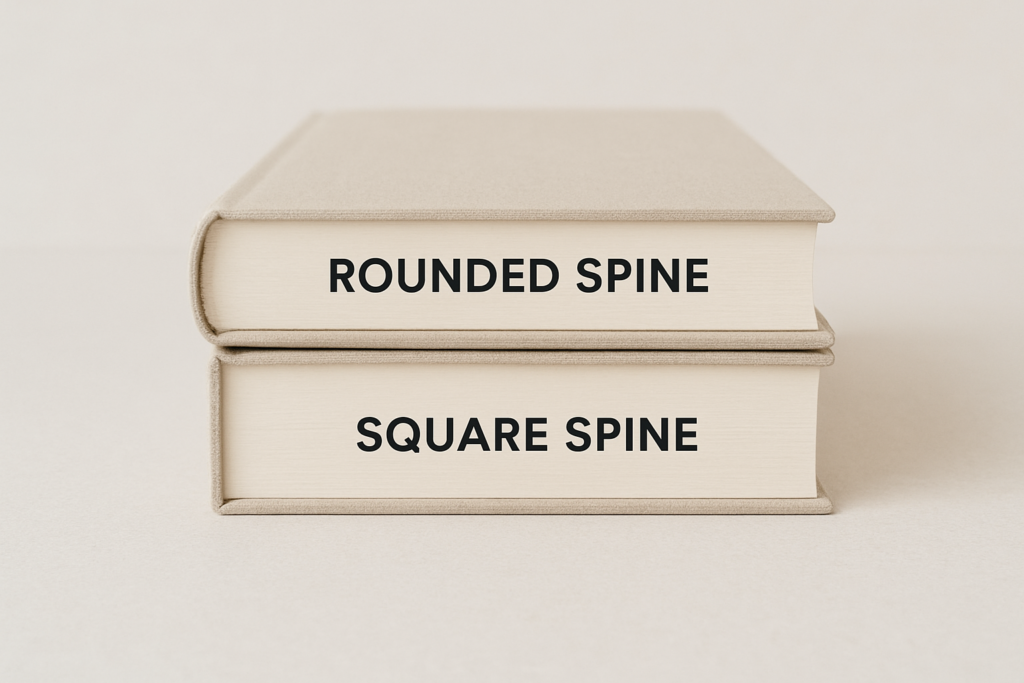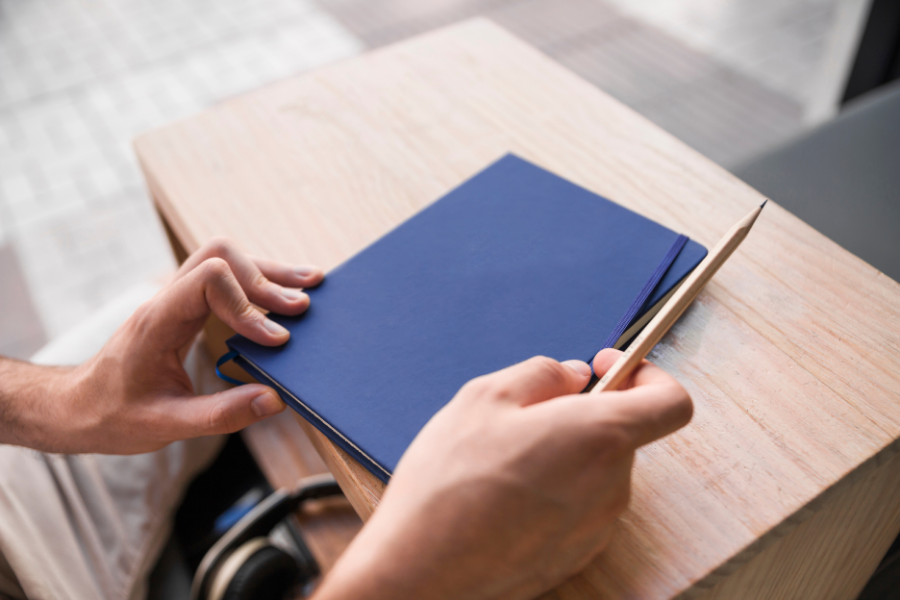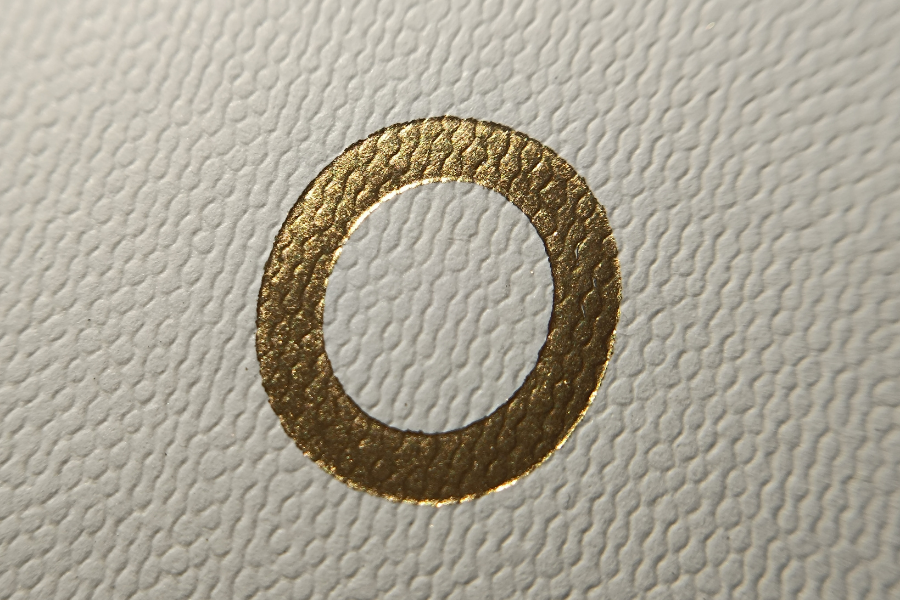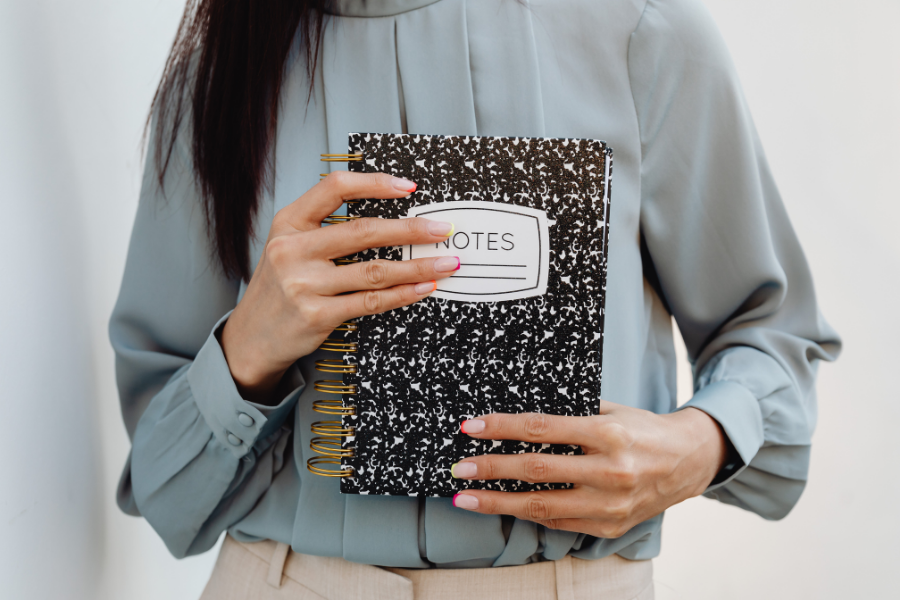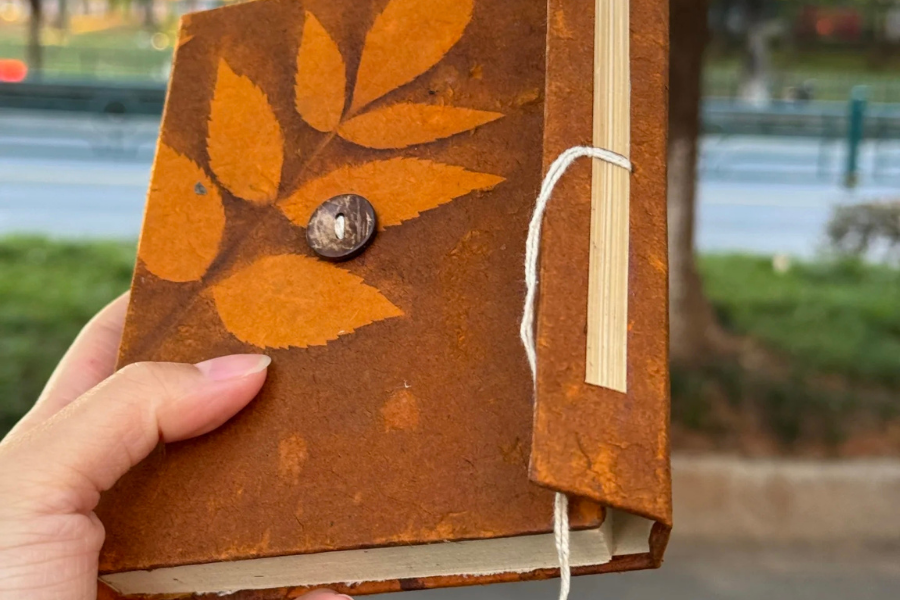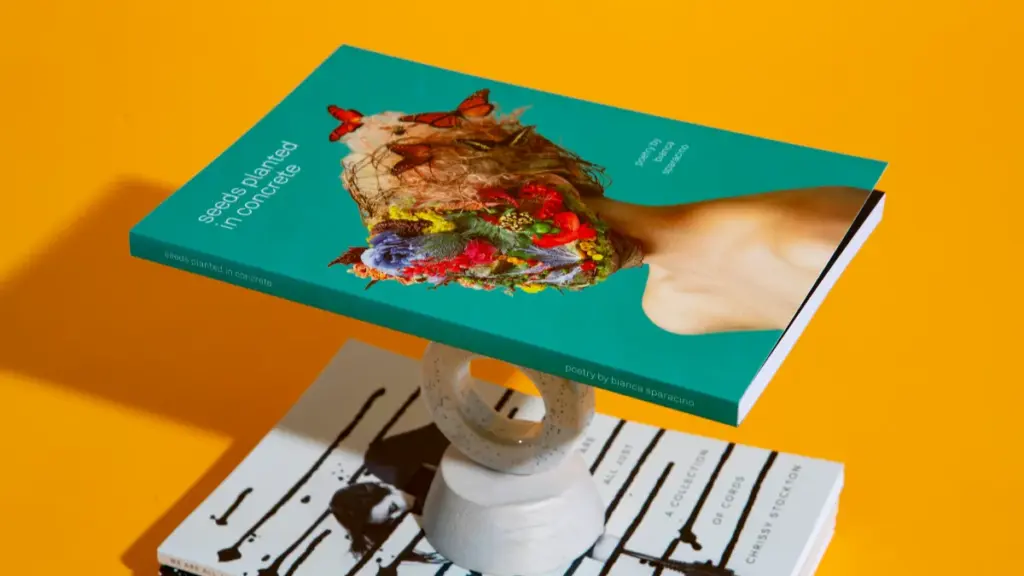अपने प्रिंट प्रोजेक्ट के लिए सही बाइंडिंग चुनना आश्चर्यजनक रूप से मुश्किल हो सकता है. कुछ प्रकाशनों के पास स्पष्ट मानक हैं, एक व्यापारिक उपन्यास की तरह, जो लगभग हमेशा परफेक्ट बाइंडिंग का उपयोग करता है, या एक छोटा कार्यक्रम कार्यक्रम जो स्पष्ट रूप से काठी सिलाई में फिट बैठता है. लेकिन क्या होगा यदि आपके प्रोजेक्ट में कोई स्पष्ट मानदंड नहीं है?पत्रिकाओं जैसी परियोजनाओं के बारे में क्या?, पॉप-अप बुक्स, या कॉर्पोरेट रिपोर्ट? आप यह कैसे तय करते हैं कि कौन सी बाइंडिंग विधि सर्वोत्तम लागत संतुलन बनाती है, टिकाऊपन, और पाठक अनुभव?
इस गाइड में, हम परफेक्ट बाइंडिंग बनाम सैडल स्टिच का पता लगाएंगे, उनके फायदे और नुकसान की तुलना करें, और आपको अपने प्रोजेक्ट के लिए सही विकल्प चुनने में मदद मिलेगी.
और पढ़ें: हर परियोजना के लिए पुस्तक बाइंडिंग के प्रकारों के लिए अंतिम गाइड
परफेक्ट बाइंडिंग क्या है?
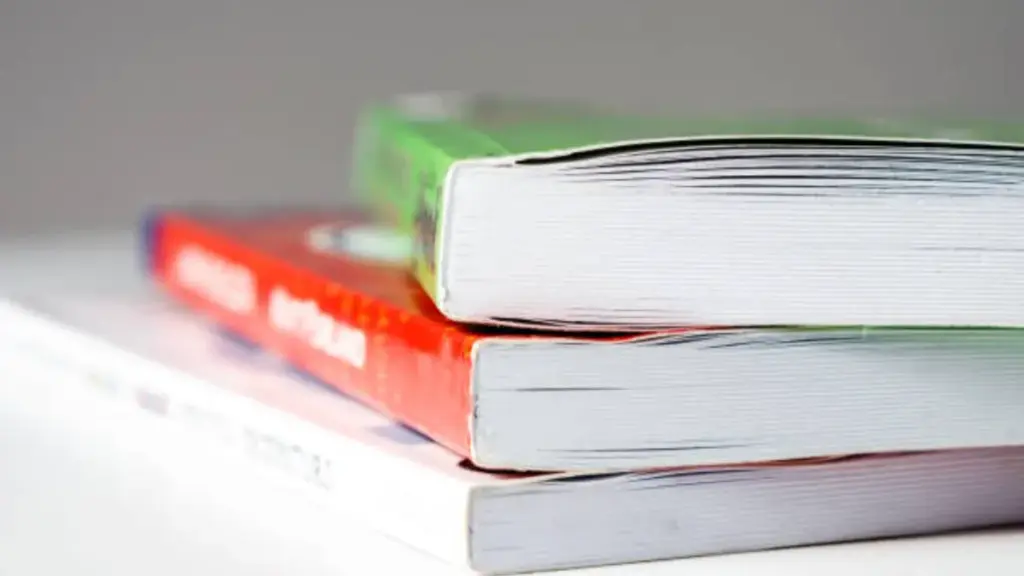
सर्वश्रेष्ठ बाइंडिंग, इसे सॉफ्टकवर या भी कहा जाता है पेपरबैक बाइंडिंग, पुस्तकों को बाइंड करने के सबसे सामान्य तरीकों में से एक है. यदि आपने कभी ट्रेड पेपरबैक उपन्यास खरीदा है, एक कॉर्पोरेट रिपोर्ट, या किसी किताब की दुकान या न्यूज़स्टैंड से एक कैटलॉग, आपने परफेक्ट बाइंडिंग देखी है.
एक उत्तम जिल्द वाली पुस्तक बनाने के लिए, प्रिंटर सभी पृष्ठों को एक साथ रखता है, फिर पन्नों के किनारों को एक मोटी कवर शीट पर चिपका देता है. गोंद आमतौर पर गर्म-पिघला हुआ चिपकने वाला या PUR होता है (पॉलीयुरेथेन प्रतिक्रियाशील) गोंद, जो मजबूत है, लचीला, और पन्नों को मजबूती से अपनी जगह पर रखता है. गोंद सूखने के बाद, हम आम तौर पर शीर्ष को ट्रिम करते हैं, तल, और पार्श्व किनारे ताकि कवर और पृष्ठ बड़े करीने से पंक्तिबद्ध हों. परफेक्ट बाइंडिंग उन किताबों के लिए सबसे अच्छा काम करती है जिनके पास है 40 पेज या अधिक, और यदि आवश्यक हो तो यह कई सौ पृष्ठों को संभाल सकता है.
परफेक्ट बाइंडिंग के फायदे और नुकसान
परफेक्ट बाइंडिंग के कई फायदे हैं, इसे कई प्रकाशकों के लिए पसंदीदा विकल्प बना दिया गया है:
- व्यावसायिक उपस्थिति: परफेक्ट बाइंडिंग एक चिकनापन प्रदान करती है, हाई-एंड लुक. सपाट रीढ़ ब्रांडिंग या शीर्षक की अनुमति देती है, जो इसे खुदरा प्रदर्शन या कॉर्पोरेट उपयोग के लिए उपयुक्त बनाता है.
- बहुमुखी प्रतिभा: पृष्ठ संख्या की एक विस्तृत श्रृंखला के साथ अच्छा काम करता है, से 40 खत्म करने के लिए 500 पृष्ठों. मोटे प्रकाशन मजबूत रहते हैं और चौकोर बढ़त बनाए रखते हैं.
- मध्यम से बड़े रन के लिए लागत प्रभावी: जबकि छोटी परियोजनाओं के लिए प्रति कॉपी काठी सिलाई की तुलना में थोड़ा अधिक महंगा है, बड़ी मात्रा में सही बाइंडिंग लागत प्रभावी हो जाती है क्योंकि स्वचालित मशीनों पर उत्पादन करना तेज़ होता है.
- सहनशीलता: उचित रूप से चिपकी हुई सही जिल्द वाली किताबें टिकाऊ होती हैं और स्टेपल की गई पुस्तिकाओं की तुलना में उनके अलग होने की संभावना कम होती है, विशेषकर मोटे प्रकाशनों के लिए.
तथापि, कुछ समझौते हैं:
- सीमित पृष्ठ लचीलापन: बहुत पतली किताबों के लिए परफेक्ट बाइंडिंग अच्छी तरह से काम नहीं करती है (से कम 40 पृष्ठों) क्योंकि रीढ़ की हड्डी पन्नों को ठीक से पकड़ नहीं पाती.
- खोलने में कठिनाई: पूर्ण जिल्द वाली किताबें खुली होने पर सपाट नहीं रहतीं. उन पाठकों के लिए जिन्हें नोट्स लेने या आरेख देखने की आवश्यकता है, यह कम सुविधाजनक हो सकता है.
- समय और उपकरण: इस प्रक्रिया के लिए विशेष गोंद और मशीनरी की आवश्यकता होती है, काठी सिलाई जैसे सरल तरीकों की तुलना में इसे थोड़ा धीमा और अधिक संसाधन-गहन बनाना.
सैडल स्टिच बाइंडिंग क्या है??
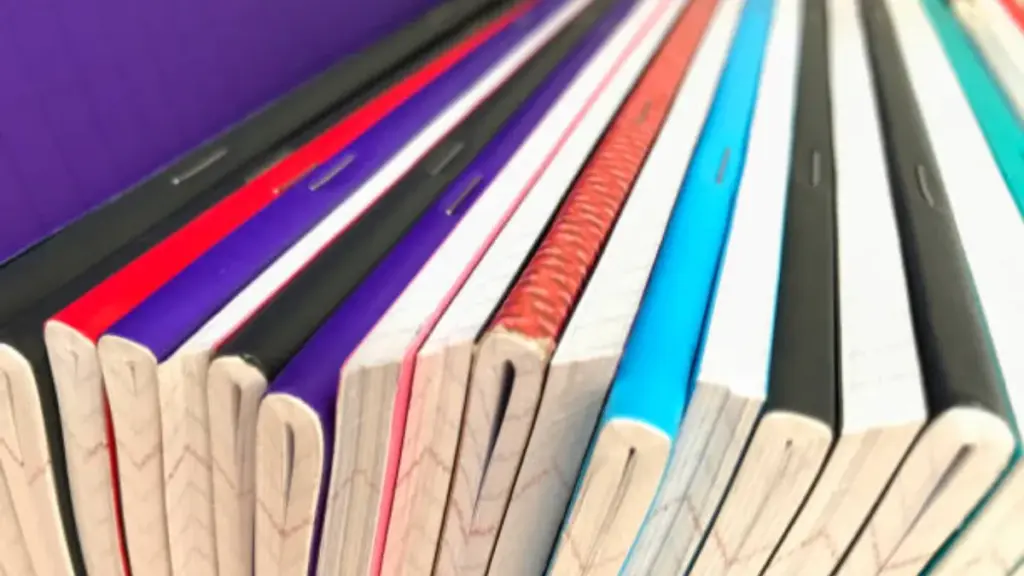
काठी सिलाई बंधन, इसे स्टेपल बाइंडिंग के रूप में भी जाना जाता है, यह एक सरल विधि है जिसका उपयोग अक्सर पत्रिकाओं के लिए किया जाता है, ब्रोशर, और लघु पुस्तिकाएँ. "सैडल स्टिच" नाम इसकी पारंपरिक प्रक्रिया से आया है: मौलिक रूप से, मुड़ी हुई चादरें प्रिंटर की मेज पर एक छोटे काठी जैसे समर्थन पर लपेटी गई थीं, और प्रिंटर मैन्युअल रूप से फोल्ड के माध्यम से स्टेपल डालेगा. इस बुनियादी तकनीक ने बाइंडिंग को इसका नाम दिया, जिसे आधुनिक स्टेपलिंग मशीनों तक ले जाया गया है.
आज, हम चादरों को आधा मोड़कर काठी-सिलाई वाली पुस्तिका बनाते हैं, उन्हें एक दूसरे के अंदर घोंसला बनाना, और तह के साथ स्टेपल करना. इसके बाद, हम साफ-सुथरी फिनिश बनाने के लिए किनारों को भी ट्रिम करते हैं. सैडल स्टिच लघु प्रकाशनों के लिए सबसे अच्छा काम करता है 4 को 64 पृष्ठों, कागज की मोटाई के आधार पर, और पुस्तिका को सीधे खुलने की अनुमति देता है.
सैडल सिलाई के फायदे और नुकसान
काठी सिलाई के कई फायदे हैं, जो प्रकाशन में इसकी लोकप्रियता को स्पष्ट करता है:
- प्रभावी लागत: छोटे प्रकाशनों या छोटे प्रिंट रन के लिए, सैडल स्टिच परफेक्ट बाइंडिंग से सस्ता है. इसके लिए कम सामग्री और सरल मशीनरी की आवश्यकता होती है.
- सपाट रहता है: सैडल-सिलाई वाली पुस्तिकाएं पूरी तरह से सपाट खुलती हैं, जो पढ़ने के लिए सुविधाजनक है.
- तेजी से उत्पादन: प्रक्रिया त्वरित और कुशल है, अत्यावश्यक परियोजनाओं या अंतिम समय की मुद्रण आवश्यकताओं के लिए उपयुक्त.
- पर्यावरण-अनुकूल विकल्प: उत्तम बाइंडिंग की तुलना में कम सामग्री की आवश्यकता होती है, और यह प्रक्रिया न्यूनतम अपशिष्ट उत्पन्न करती है.
अभी तक, काठी सिलाई सीमाओं के साथ आती है:
- पृष्ठ संख्या प्रतिबंध: आम तौर पर, प्रकाशन नीचे रहना चाहिए 64 पृष्ठों; उसके परे, पुस्तिका भारी हो जाती है, और स्टेपल अच्छी तरह से पकड़ में नहीं आ सकते हैं.
- कम टिकाऊ: भारी या बार-बार उपयोग की जाने वाली पुस्तिकाओं के स्टेपल समय के साथ ढीले हो सकते हैं.
- सीमित रीढ़ विकल्प: कोई मुद्रित रीढ़ नहीं है, इसलिए रीढ़ की हड्डी पर दाग लगाना संभव नहीं है, जो खुदरा या कॉर्पोरेट परियोजनाओं के लिए एक खामी हो सकती है.
परफेक्ट बाइंडिंग बनाम सैडल स्टिच के बीच मुख्य अंतर
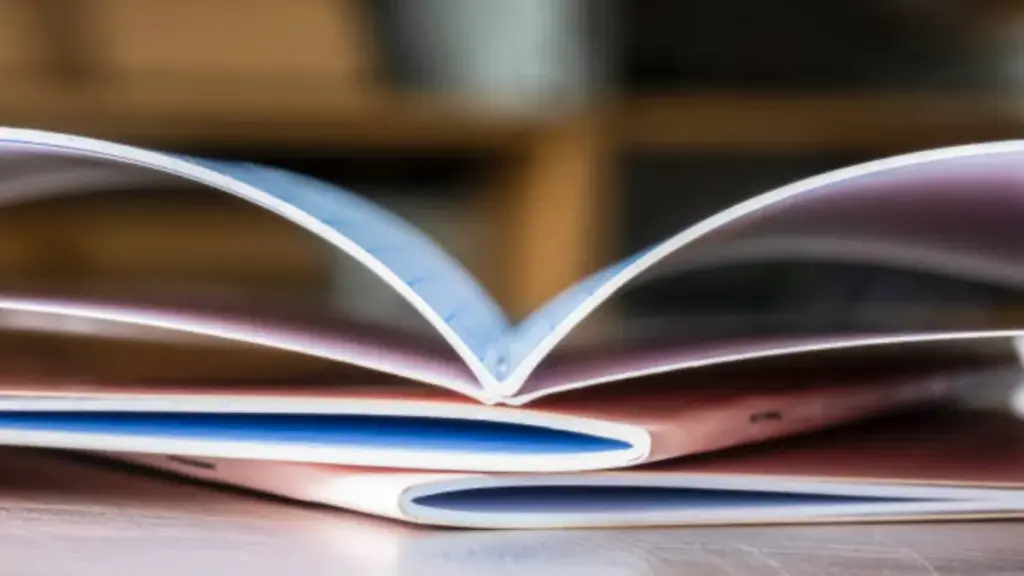
परफेक्ट बाइंडिंग और सैडल स्टिच के बीच निर्णय लेते समय, विचार करने के लिए कई महत्वपूर्ण अंतर हैं:
| विशेषता | सर्वश्रेष्ठ बाइंडिंग | पीठ पर टांके लगाना |
| पृष्ठ संख्या | 40+ पृष्ठों (से अधिक हो सकता है 500 पृष्ठों) | 4-64 पृष्ठ (कागज की मोटाई पर निर्भर करता है) |
| उपस्थिति | पॉलिश, पेशेवर, सपाट रीढ़ | सरल, कार्यात्मक, कोई मुद्रित रीढ़ नहीं |
| सहनशीलता | मोटे प्रकाशनों के लिए मजबूत | कम टिकाऊ, भारी उपयोग के कारण स्टेपल विफल हो सकते हैं |
| पढ़ने में आसानी | आसानी से सपाट नहीं रहता | सपाट पड़ा है, संभालना आसान |
| लागत | छोटे रनों के लिए उच्चतर, बड़े रनों के लिए लागत प्रभावी | कम लागत, विशेषकर लघु प्रकाशनों के लिए |
| अनुकूलन | स्पाइन प्रिंटिंग संभव, पूर्ण कवर डिज़ाइन | सीमित कवर डिज़ाइन विकल्प, कोई स्पाइन प्रिंटिंग नहीं |
| बदलाव का समय | गोंद जमने के कारण थोड़ा अधिक लंबा | और तेज, न्यूनतम उपकरण की आवश्यकता |
अपने प्रोजेक्ट के लिए सही बाइंडिंग कैसे चुनें
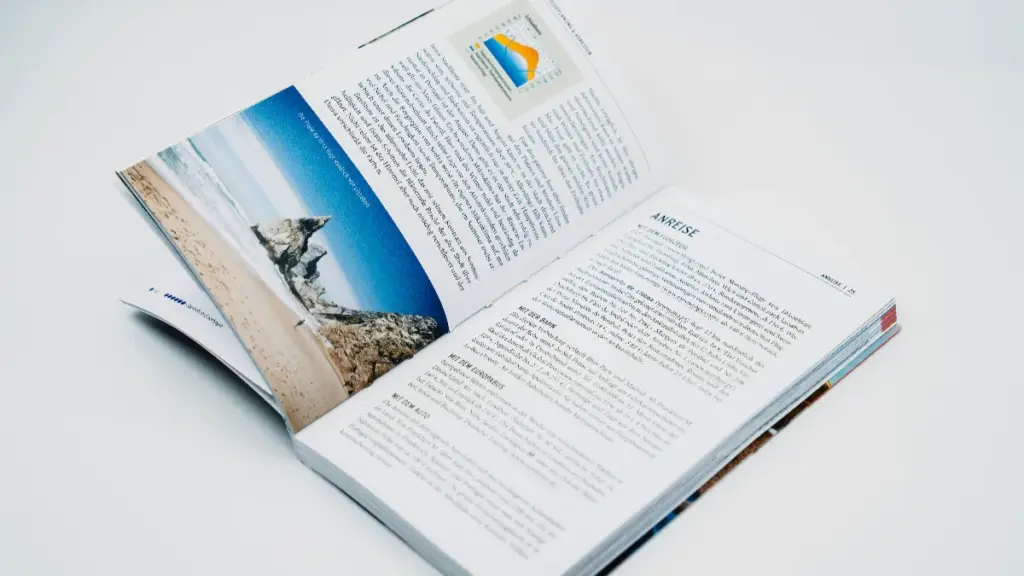
अपने लिए सही विधि का चयन करना कस्टम बाइंडिंग पुस्तक कई प्रैक्टिकल पर निर्भर करता है:
पृष्ठ संख्या
पहली चीज़ जिस पर हम विचार करते हैं वह है पृष्ठों की संख्या. जैसा कि हमने ऊपर बताया है, परफेक्ट बाइंडिंग किताबों के लिए सबसे अच्छा काम करती है 40 पेज या अधिक, और यह स्थायित्व खोए बिना कई सौ पृष्ठों को संभाल सकता है. सैडल स्टिच छोटे प्रकाशनों के लिए आदर्श है, आम तौर पर 4 को 64 पृष्ठों, कागज की मोटाई के आधार पर. पृष्ठ संख्या की शीघ्र जाँच करने से ऐसी बाइंडिंग विधि चुनने से बचने में मदद मिलती है जो आपके प्रकाशन का ठीक से समर्थन नहीं करेगी.
परियोजना का उद्देश्य
आपके प्रोजेक्ट के उद्देश्य को समझने से हमें सही बाइंडिंग का मिलान करने में मदद मिलती है:
- फिक्शन & उपन्यास या पेशेवर रिपोर्ट: सर्वश्रेष्ठ बाइंडिंग
- पत्रिका या कैटलॉग के अंतर्गत 64 पृष्ठों: पीठ पर टांके लगाना
- ब्रोशर या इवेंट कार्यक्रम: पीठ पर टांके लगाना
- कॉर्पोरेट मैनुअल या मोटी वार्षिक रिपोर्ट: सर्वश्रेष्ठ बाइंडिंग
- पॉप-अप किताबें या इंटरैक्टिव सामग्री: सैडल सिलाई या विशेष बाइंडिंग
बजट और मात्रा
आपका बजट और प्रिंट मात्रा भी चुनाव को प्रभावित करती है. छोटे रन के लिए, काठी सिलाई आमतौर पर अधिक लागत प्रभावी होती है क्योंकि इसमें कम सेटअप और सामग्री की आवश्यकता होती है. बड़े रनों के लिए, परफेक्ट बाइंडिंग लागत को अधिक प्रतियों तक फैला देती है, एक पॉलिश फिनिश प्रदान करते हुए इसे प्रति यूनिट अधिक किफायती बनाना. हम आपके प्रोजेक्ट आकार और बजट के आधार पर सर्वोत्तम विकल्प की गणना करने में आपकी सहायता कर सकते हैं.
पाठक अनुभव
हम यह भी विचार करते हैं कि आपके पाठक प्रकाशन का उपयोग कैसे करेंगे. यदि पाठकों को नोट्स लेने की आवश्यकता है, संदर्भ पृष्ठ बार-बार, या जल्दी पलटें, काठी सिलाई बेहतर है क्योंकि यह सपाट खुलती है. परफेक्ट बाइंडिंग एक सफाई देती है, प्रोफेशनल लुक, लेकिन यह पूरी तरह से सपाट नहीं है, जो बार-बार पन्ने पलटने के लिए कम सुविधाजनक हो सकता है. पाठक के व्यवहार को समझने से हमें सबसे व्यावहारिक समाधान सुझाने में मदद मिलती है.
स्थायित्व की आवश्यकताएँ
अंत में, हम देखते हैं कि प्रकाशन कितना टिकाऊ होना चाहिए. परफेक्ट बाइंडिंग उन किताबों के लिए अच्छी तरह से पकड़ में आती है जिन्हें अक्सर संभाला जाएगा या लंबी दूरी पर भेजा जाएगा. सैडल सिलाई छोटे लोगों के लिए ठीक काम करती है, हल्के प्रकाशन, लेकिन यदि पुस्तिका भारी है या बार-बार उपयोग की जाती है तो स्टेपल ढीले हो सकते हैं. उपयोग के साथ टिकाऊपन का मिलान यह सुनिश्चित करता है कि आपका प्रकाशन इच्छित अवधि तक चलता रहे.
पेशेवर मुद्रण युक्तियाँ और अगले चरण प्राप्त करें
पर Xinyi प्रिंटिंग, हम गठबंधन करते हैं 27 प्रीमियम पुस्तक और वाणिज्यिक मुद्रण प्रदान करने के लिए उन्नत उत्पादन क्षमताओं के साथ उद्योग का वर्षों का अनुभव. हमारा कारखाना 20,000㎡ की मासिक क्षमता तक फैला है 500,000 किताबें और लाखों पैकेजिंग उत्पाद, यह सुनिश्चित करते हुए कि हम छोटे और बड़े दोनों प्रकार के ऑर्डरों को कुशलतापूर्वक संभाल सकें.
हमारे उत्पादन में अगली पीढ़ी का हीडलबर्ग शामिल है 6+1 बेल्ट ऑयल-पासिंग ऑटो-ड्राईिंग प्रेस, दो हाई-स्पीड कोमोरी लिथ्रोन 4-कलर प्रेस, और एक बहुमुखी 4+4 जटिल मल्टीटोन नौकरियों के लिए आठ-रंग हाइब्रिड प्रेस. ये मशीनें सटीक रंग पुनरुत्पादन प्रदान करती हैं, तेजी से बदलाव, और लगातार गुणवत्ता, आपके प्रोजेक्ट को हर बार पेशेवर और बेहतर दिखने में मदद करना.
हमारे पास BSCI जैसे प्रमाणपत्र हैं, एफएससी, ISO9001, और ISO14001, वगैरह. स्थायी प्रथाओं की गारंटी देना, गुणवत्ता नियंत्रण, और विश्वसनीय डिलीवरी. Xinyi Printing के साथ साझेदारी करने से आपको मानसिक शांति मिलती है कि आपका प्रोजेक्ट बाज़ार में खड़ा होने के साथ-साथ अंतरराष्ट्रीय मानकों को पूरा करेगा. 👉आज ही हमसे संपर्क करें अपने प्रोजेक्ट पर चर्चा करने और एक अनुरूप समाधान प्राप्त करने के लिए जो आपके सटीक विनिर्देशों को पूरा करता हो.













